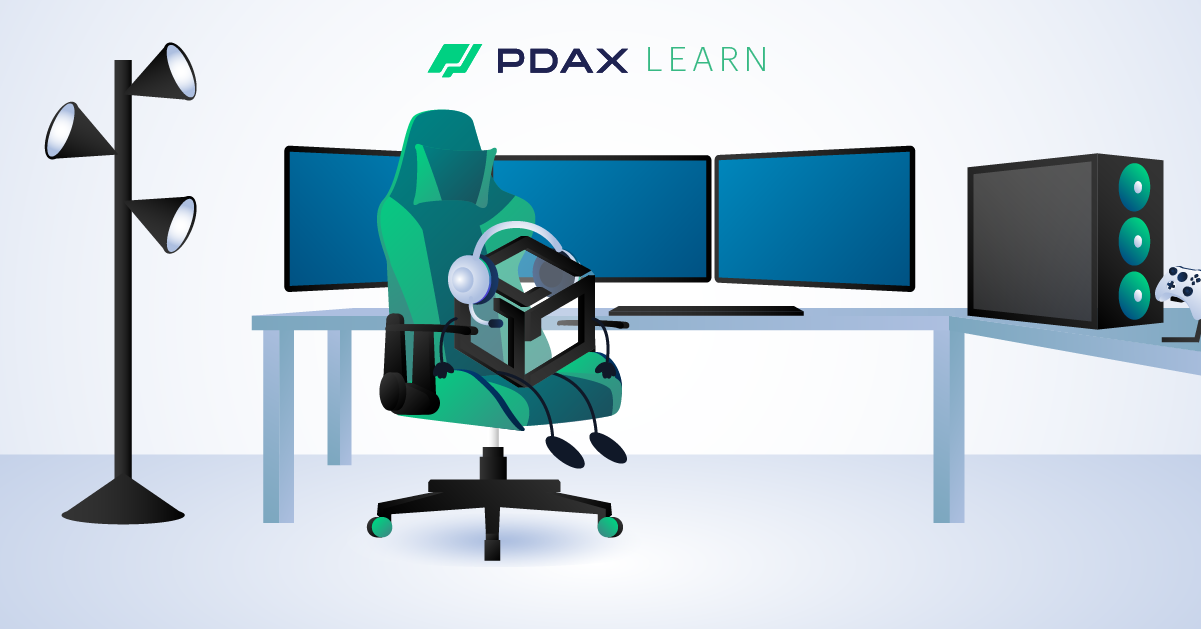It used to be that video games were just like any other packaged consumer product that you could simply buy off the shelf and play with for a while until it got old, or until a new game comes along. Either way, this traditional setup was mostly passive on the part of the gamer, with all the creative decisions and game development left to the game companies, and of course–all the profits as well.
But with the push towards a more decentralized Web 3.0, companies like Gala Games are aiming to turn the video gaming industry on its head. The idea is that instead of gamers idly waiting for months or years until the release date of a long awaited title, the gamers themselves can contribute to the creative process, allowing games to naturally evolve over time and be in sync with what the community wants, or as phrased in Gala’s mission statement, to make “ blockchain games you’ll actually want to play”.
This is of course, all thanks to blockchain technology, which can effectively facilitate collaboration and consensus among a network of people without the need for a central authority. And since there’s no central figure, this means that any revenue generated by a gaming project simply gets redistributed back to the community–which is the core ethos of the whole play-to-earn (P2E) gaming movement.
In short, Gala is a gaming network that is mostly owned by its users. From the non-fungible tokens (NFTs) that are used within the game applications, to the gaming nodes that secure the network itself.
What is GALA for?
GALA is the ERC-20 token that powers the Gala ecosystem. It’s basically the currency that Gala players use within the platform to buy and sell NFT items across any game. The games too, give out rewards and earnings denominated in GALA.
GALA is also a governance token, which means that players can use their holdings to vote on community matters such as which gaming projects to be prioritized for development and funded more, or what features should be included in future updates.
GALA can also be “staked” to participate as a network node. This means lending your hardware’s computing power to support network transactions and functionality in exchange for earning more GALA. Currently, GALA is maintained by a global network of over 20,000 nodes servicing approximately 1.3 million active users.
What games are there on Gala?
Gala Games is still early in development, but as of July 2022, Gala Game’s official website already lists 14 titles in various stages of release. Its first live game, TownStar is Gala’s entry for the farming genre, where players grow crops and farm other resources to strategically build a town from the ground up.
Other games waiting to be released soon include Spider Tanks, a player-vs-player arena brawler game and Legends Reborn, a trading card game. Other projects in the works include the tower defense game, Fortitude, and a fantasy role-playing game, Eternal Paradox.
Tokenomics
GALA has a maximum supply of 50 billion tokens of which only 7.5 billion are in circulation as of May 2023.
Gala Games will upgrade its token to GALA v2 in May of 2023, which will introduce improved burn mechanisms, security, and upgradeability, and which will be airdropped to GALA holders on a 1:1 ratio.
Ready to start with crypto?
Start your trading journey by downloading the PDAX mobile app.
DISCLAIMER: The statements in this article do not constitute financial advice. PDAX does not guarantee the technical and financial integrity of the digital asset and its ecosystem. Any and all trading involving the digital asset is subject to the user’s risk and discretion and must be done after adequate and in-depth research and analysis.
About PDAX
PDAX is a BSP-licensed exchange where you can trade Bitcoin, Ethereum, and other cryptocurrencies directly using PHP!
Featured Posts
You might also like
MON (Monad) is now on PDAX!
PDAX
December 04, 2025
PDAX Learn: USDC on Arbitrum is now on PDAX
PDAX
December 01, 2025
Pump.fun’s PUMP token is now on PDAX! 🎈
PDAX
November 26, 2025
Aerodrome Finance’s AERO token is now on PDAX!
PDAX
November 12, 2025
